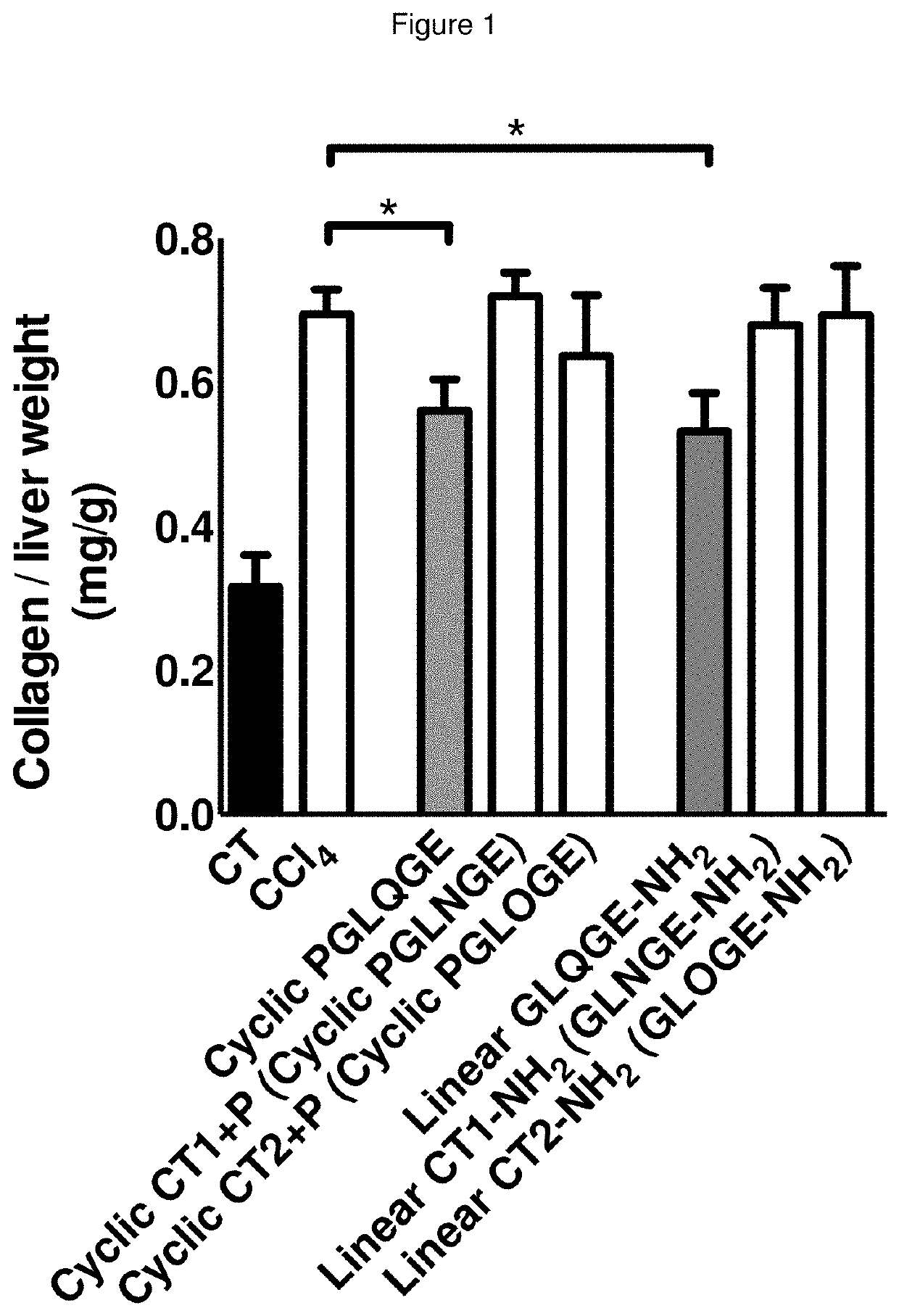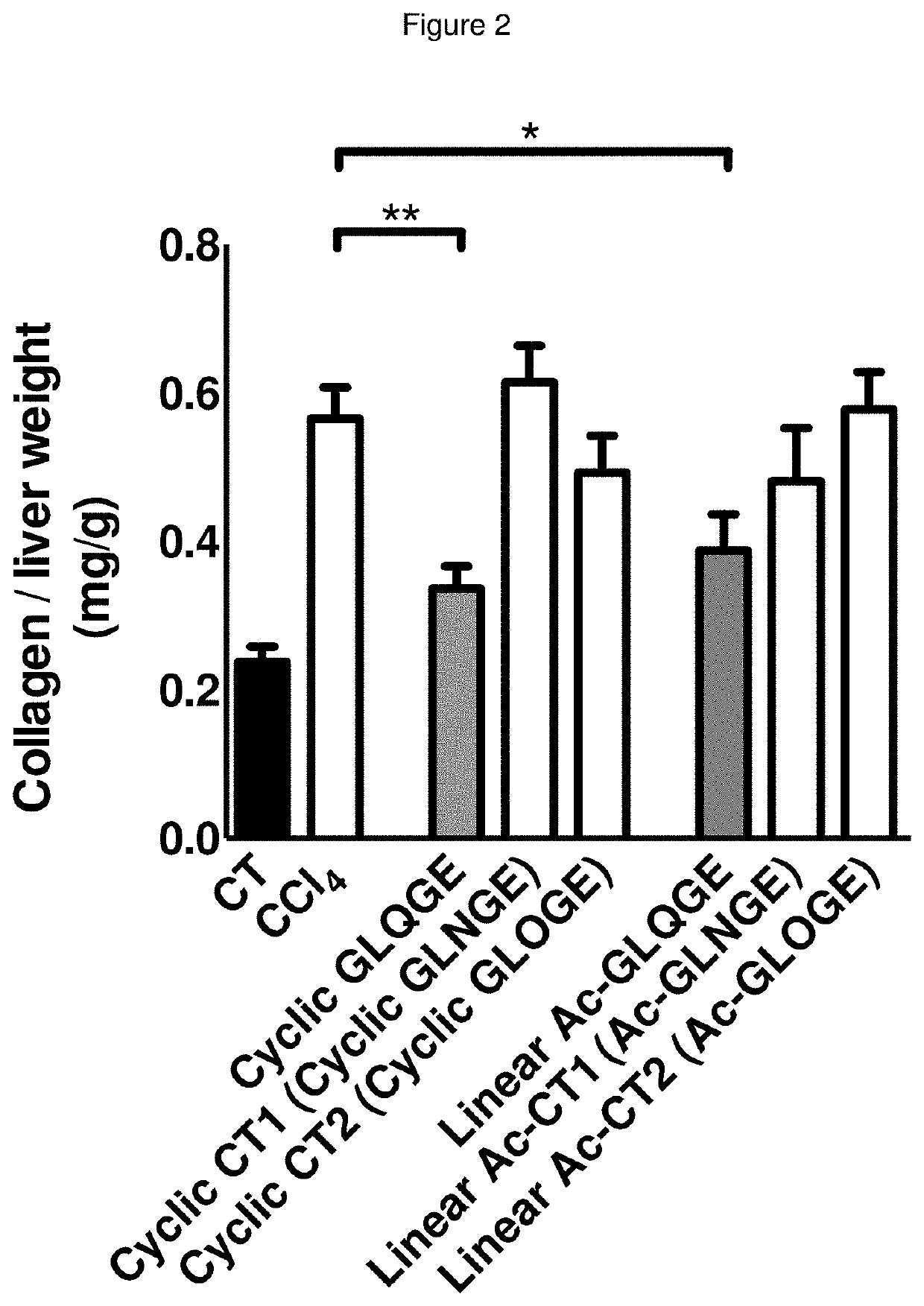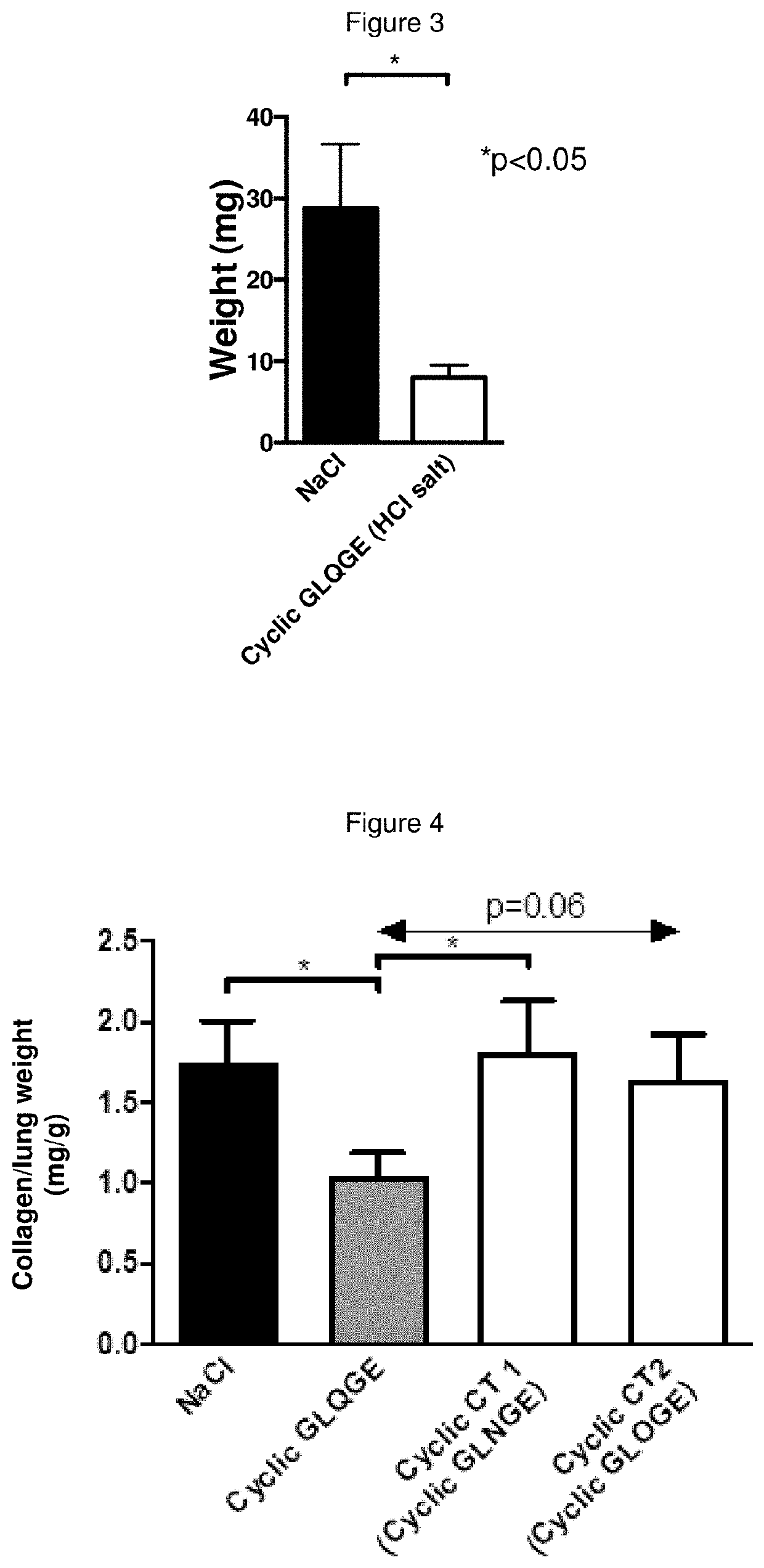Peptides as inhibitors of fibrotic matrix accumulation
- Summary
- Abstract
- Description
- Claims
- Application Information
AI Technical Summary
Benefits of technology
Problems solved by technology
Method used
Image
Examples
example 1
ynthesis
[0125]The peptide Gly-Leu-Gln-Gly-Glu (GLQGE) was synthesized in linear form as Gly-Leu-Gln-Gly-Glu-NH2 (also named linear GLQGE-NH2) and in linear form as acetate-Gly-Leu-Gln-Gly-Glu (also named linear Ac-GLQGE) and in cyclic form as cyclic Gly-Leu-Gln-Gly-Glu (also named cyclic GLQGE without C-terminal amide and without N-terminal acetate). The peptide Pro-Gly-Leu-Gln-Gly-Glu (also named cyclic PGLQGE) was only synthesized in cyclic form. Both control peptides Gly-Leu-Asn-Gly-Glu (also named as Linear CT1 (Linear GLNGE)) and Gly-Leu-Hyp-Gly-Glu (also named as Linear CT2 (Linear GLOGE)) were synthesized in linear form with C-terminal amidation (GLNGE-NH2 and GLOGE-NH2) and with N-terminal acetylation (Ac-GLNGE and Ac-GLOGE) and also in cyclic form with and without proline (cyclic GLNGE or cyclic PGLNGE as well as cyclic GLOGE or cyclic PGLOGE). The designation of all peptides used in the present application are listed in Table 1.
[0126]The linear peptides were synthesized on...
example 2
Cyclic Peptides with Proline and Amidated Linear Peptides on Chemically Induced Liver Fibrosis in Mice
[0143]Mice were injected for 6 weeks with CCl4 in order to induce liver fibrosis. Starting on day 32 the mice received daily intraperitoneal injections of the peptides at a final dose of 25 mg / kg / mouse / day diluted in NaCl 0.9% for a total of 10 days. In these experiments, the following peptides were tested: cyclic peptide Pro-Gly-Leu-Gln-Gly-Glu, cyclic peptide Pro-Gly-Leu-Asn-Gly-Glu, cyclic peptide Pro-Gly-Leu-Hyp-Gly-Glu, linear peptide Gly-Leu-Gln-Gly-Glu-NH2, linear peptide Gly-Leu-Asn-Gly-Glu-NH2, linear peptide Gly-Leu-Hyp-Gly-Glu-NH2.
[0144]Results showed that the treatment with CCl4 significantly induced collagen production in the liver (marker of matrix accumulation), and the cyclic peptide Pro-Gly-Leu-Gln-Gly-Glu was able to significantly reduce collagen accumulation. Also the linear peptide GLQGE-NH2 was able to significantly reduce CCl4-induced collagen accumulation. In ...
example 3
Cyclic Peptides (Without Proline) and Acetylated Linear Peptides on Chemically Induced Liver Fibrosis in Mice
[0145]Mice were injected for 6 weeks with CCl4 in order to induce liver fibrosis. Starting on day 32 the mice received daily intraperitoneal injections of the peptides at a final dose of 25 mg / kg / mouse / day diluted in NaCl 0.9% for a total of 10 days. In these experiments, the following peptides were tested: cyclic peptide Gly-Leu-Gln-Gly-Glu, cyclic peptide Gly-Leu-Asn-Gly-Glu, cyclic peptide Gly-Leu-Hyp-Gly-Glu, linear peptide Ac-Gly-Leu-Gln-Gly-Glu, linear peptide Ac-Gly-Leu-Asn-Gly-Glu, linear peptide Ac-Gly-Leu-Hyp-Gly-Glu.
[0146]Results showed that the treatment with CCl4 significantly induced collagen production in the liver (marker of matrix accumulation), and the cyclic peptide Gly-Leu-Gln-Gly-Glu was able to significantly reduce collagen accumulation. Also the linear peptide Ac-Gly-Leu-Gln-Gly-Glu was able to significantly reduce CCl4-induced collagen accumulation. In...
PUM
| Property | Measurement | Unit |
|---|---|---|
| Composition | aaaaa | aaaaa |
Abstract
Description
Claims
Application Information
 Login to view more
Login to view more - R&D Engineer
- R&D Manager
- IP Professional
- Industry Leading Data Capabilities
- Powerful AI technology
- Patent DNA Extraction
Browse by: Latest US Patents, China's latest patents, Technical Efficacy Thesaurus, Application Domain, Technology Topic.
© 2024 PatSnap. All rights reserved.Legal|Privacy policy|Modern Slavery Act Transparency Statement|Sitemap



